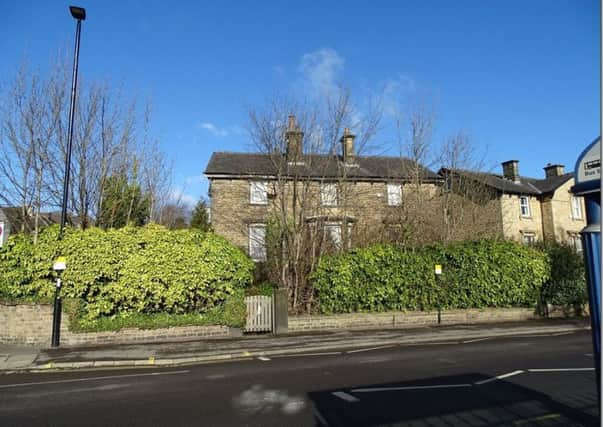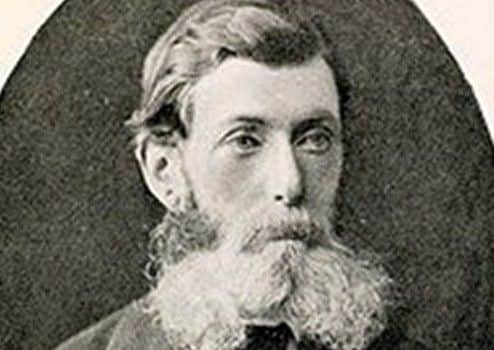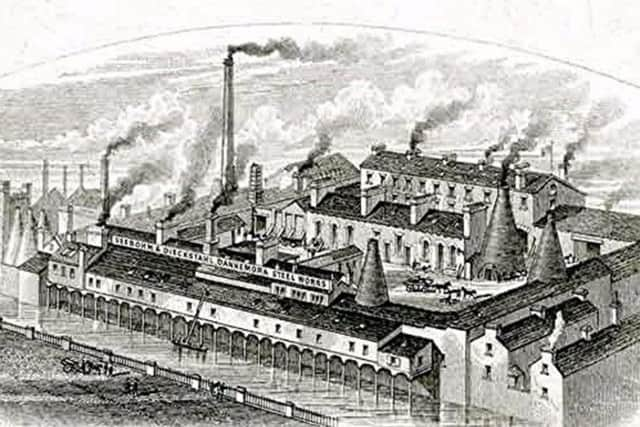Steel magnate who helped to enhance Sheffield's fortunes


It can be seen on the gable end of 78 Clarkehouse Road. This modest house was the home of the well-known steel manufacturer, Mr Henry Seebohm.
Henry Seebohm was the oldest son of Benjamin Seebohm (who lived from 1798–1871), who was a wool Stapler at Horton Grange, Bradford.


Advertisement
Hide AdAdvertisement
Hide AdThe Seebohm family had moved to England from Friedensthal in Germany. Henry’s mother Esther Wheeler ( who lived from 1798–1864) was a granddaughter of William Tuke.
The Seebohm family was active in the Society of Friends and Henry was schooled within the community in York. Hwenry Seebohm worked initially in a grocery store as an assistant, but he later moved to Sheffield where he joined forces with George Charles Dieckenstahl in 1865. A native of Hannover, Charles Dieckenstahl came to Sheffield in 1859 as a traveller for Moss & Gamble steel stockholders and, in the 1861 census, he was listed as a boarder on Glossop Road.
Henry Seebohm married Maria, daughter of George John Healey, a merchant in Manchester on January 19, 1859. Henry Seebohm became very interested in natural history at school and continued to spend his spare time studying birds on his journeys. He travelled widely visiting Greece, Scandinavia, Turkey, and South Africa.
His expeditions to the Yenisey Tundra of Siberia were described in his two books, Siberia in Europe 1880 and Siberia in Asia 1882, which were combined in the posthumous publication – The Birds of Siberia 1901.


Advertisement
Hide AdAdvertisement
Hide AdHis expeditions included the lower Pechora River in 1875 along with John Alexander Harvie-Brown and in addition he travelled to Heligoland at the home of Heinrich Gätke. In 1877 he joined Joseph Wiggins to Siberia.
He was one of the first European ornithologists to accept the American trinomial system to classify Sub-species. Seebohm`s other publications included A History of British Birds 1883, The Geographical Distribution of the family Charadriidae in 1890 and The Birds of the Japanese Empire.
Seebohm bequeathed his collection of bird-skins to the British Museum. The collection, which was received in 1896, consisted of nearly 17,000 specimens. A number of birds were named after Seebohm. Henry died on the November 26, 1895.
Back to the steel works – it grew in reputation thanks to the founder’s business ability and the works in the Wicker covered the area between Sheldon Row, now gone, and was backed on to the River don. In 1899 the firm became a private company. During WWI the new firm was re-named as Arthur Balfour & Co because of anti German feelings, and the head of this company was Arthur Balfour, aka, Lord Riverdale. He was born in London on January 3, 1873, and was educated at Ashville College, Harrogate. He began his industrial career in a junior position with his family’s steelmaking company and, while still in his teens, he went to America in order to obtain some general experience of engineering methods in that country.


Advertisement
Hide AdAdvertisement
Hide AdFor part of that period he assisted in some research work into metal melting methods and was also concerned with some experiments which, it has been stated, led to the industrial development of electric melting furnaces.
A few years later, in 1899, Lord Riverdale set out on a world tour to visit the overseas branches of Arthur Balfour and Co Ltd and to open new ones. During the tour he again spent some months in the USA and visited, among other plants, the Bethlehem Steel Works.
While at the Bethlehem Steelworks, he studied a new metal cutting technique. Lord Riverdale’s interest in the matter was such that he bought an option on the process for eight weeks. Consultations with some British firms ensued and there then followed some experiments, which resulted in the first high-speed steel made in this country.
Lord Riverdale’s distinguished career in the famous Sheffield steel industry was combined with an outstanding record of his work in public services. At the turn of the century he was vice-consul for Denmark in Sheffield, and for the two years – during 1911 and 1912 – he was elected Master Cutler.


Advertisement
Hide AdAdvertisement
Hide AdJust prior to the First World War, Lord Riverdale served as a member of the Royal Commission on Railways. Inevitably, during the war years, Lord Riverdale was called upon for many services.
Throughout the whole of the First World War he was a member of the Treasury’s industry advisory committee; and subsequently, he was appointed to the advisory council for scientific and industrial research, to the engineering industries committee and to Lord Balfour’s committee on commercial and industrial policy. At the end of the First World War, Lord Riverdale was elected to be the president of the Sheffield Chamber of Commerce and, it was in 1923, that he became president of the Association of British Chambers of Commerce.
In that same year he was appointed to the advisory council of the Department of Overseas Trade and also to the advisory council of the Board of Trade.
A year later, Lord Riverdale was invited to take yet another important task when be became chairman of a Government committee on industry and trade. The final report of that committee appeared in 1929 and was a thoroughly detailed document in nine sections dealing with just about every aspect of British industry in the years which followed the post-war boom. In recognition of his work on this committee, and in many other spheres of public service, Lord Riverdale was created a baronet in 1929, having been made a KBE six years earlier. He was elected to the peerage in 1935 and was created GBE in 1942. He died on July 7, 1957. Finally, reference must be made to Lord Riverdale’s work, throughout the Second World War and subsequently, for the Royal Air Force Benevolent Fund; he was chairman of the committee of management for several years.